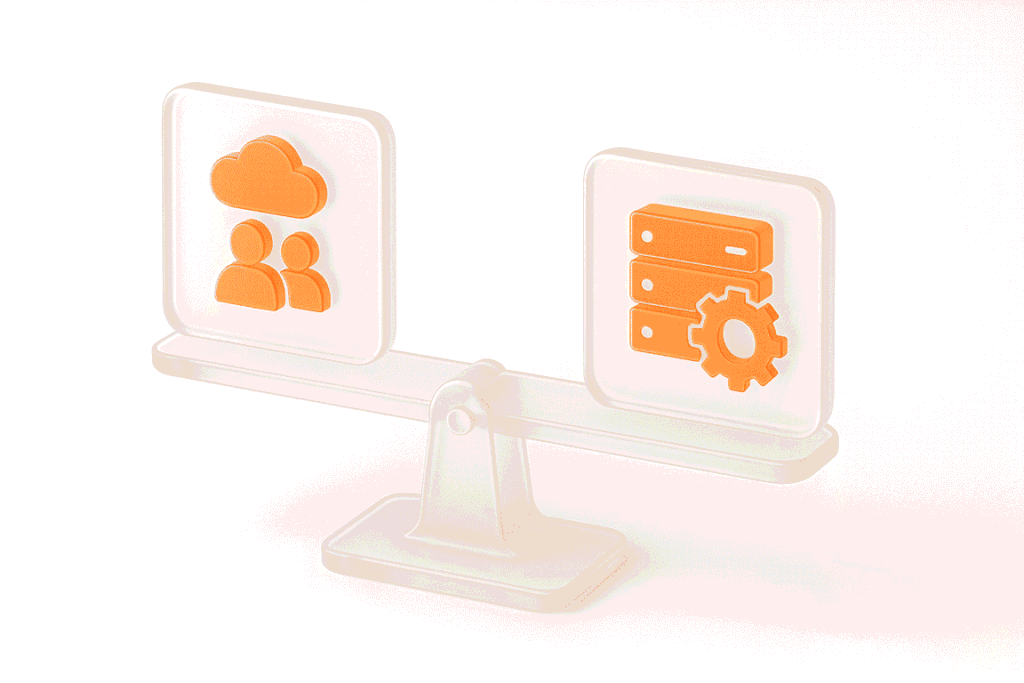Cloud-based solutions are getting more and more popular every year, and revenue in the public cloud market is projected to reach US$525.60bn in 2023. More than half of this market is represented by SaaS and aPaaS businesses, and the demand is increasing every year. We have seen such businesses as Slack or Zoom expand recently, but others will eventually have to do so, too. In this blogpost, we want to share our vision of what is primarily important when scaling your SaaS or aPaaS business.
We grouped our advice into two categories. Explicit business solutions that you will most probably face when scaling come first. Secondly, we are listing technical aspects of business growth: safety and performance of your service.
Business Strategy and Marketing
Choose the growth direction
SaaS and aPaaS projects tend to gain their initial client base in the mid-market, as people are more inclined to innovative solutions in this segment. Once it has been conquered, one has to choose the direction of further growth and development. Most companies choose one of the following:
Reconsider your user acquisition methods
Whatever direction of development you choose, you will have to change your approach to marketing to boost sales and increase the flow of new customers. Start by analyzing the market and the target audience: this way, you will be able to offer the most effective solution to their problems.
You have to be able to answer three questions:
What helps to find answers is specialized marketing research, taking part in conferences, and permanent feedback monitoring. These are three ways to find out what your target audience is like, what their pains are, and what you should offer them.
Look out for new promotion strategies
Study your target audience and find a way to communicate with them. You can do it not only on specialized platforms, such as LinkedIn, but also on those websites that users visit looking for solutions to technical issues, such as Quora or Reddit. Do not undervalue promotion through opinion leaders: their authority will add value to your product.
An approach that is considered to be one of the most effective is account-based marketing (ABM). You choose the accounts of specific company executives or reputable speakers in the industry and focus your advertising campaign around them. This approach ensures much higher ROI performance in B2B marketing compared to other strategies.
Keep in mind the rest of the tools to work with the audience, for example, retargeting. It is not like each visitor to your site will immediately make a purchase or share their contact details, but each of them will leave their digital footprint. Data on the source of traffic, the browsed pages, and search queries will help you create a portrait of a future customer. Use this knowledge when creating advertising and do not miss the opportunity to remind them about yourself through other channels!
Gather your dream team
To make the strategy and tools of your choice work, you will need a professional team of marketing experts, specialists in SEO, and sales managers by your side. According to Forbes, a well-rounded effective team should include employees that correspond to the following personas:
Security and Performance
Give your customers the best level of security
Some of the most harmful threats in cloud services are data breaches. If you disclose your customers’ personal details, not only your reputation will suffer, but also your budget: even if your customers are not EU members, there are local analogs of GDPR in many countries. It is definitely in your own interest to ensure that such concerns are not met. One effective way to manage system health and maintain reliability is by applying principles from Site Reliability Engineering (SRE), which focuses on balancing the need for new features with system stability. Moreover, you can use the security measures taken as a marketing tool to highlight the reliability and security of your SaaS or aPaaS project.
Go ahead – tell them how you use the data, invite an experienced safety consultant (who knows, maybe they can become your ambassador), and tell your customers about your efforts and plans to improve protection. Make sure your customers know their data is well-protected.
Get ready for the load
If you followed the steps described above and did everything right, you will soon face a rise in the numbers of your website users. Your service has to be ready for both a smooth flow of new customers and a peak load. Pay attention to hardware upgrades in advance, and increase your server capacity and network bandwidth. In this context, it’s important to explore the role of SLIs, SLOs, and SLAs in maintaining performance, as they help ensure that service reliability and user satisfaction are upheld while managing growth.
Studies show that each second awaiting response reduces conversion by 7% and user satisfaction by 16%. About half of the respondents say they would not return to the service after noticing performance issues. One crucial strategy for ensuring your system’s performance under load is monitoring the four golden signals for system performance. These key metrics can help you proactively address potential issues before they impact your users. For instance, a good website loading time is considered to be less than 200ms on average.
There is special software to generate load based on your system scripts. You can test the performance of your service yourself using an innovative PFLB platform with a user-friendly interface that requires no coding skills. If you need help with performance testing, contact us, and we will find the best solution together.



